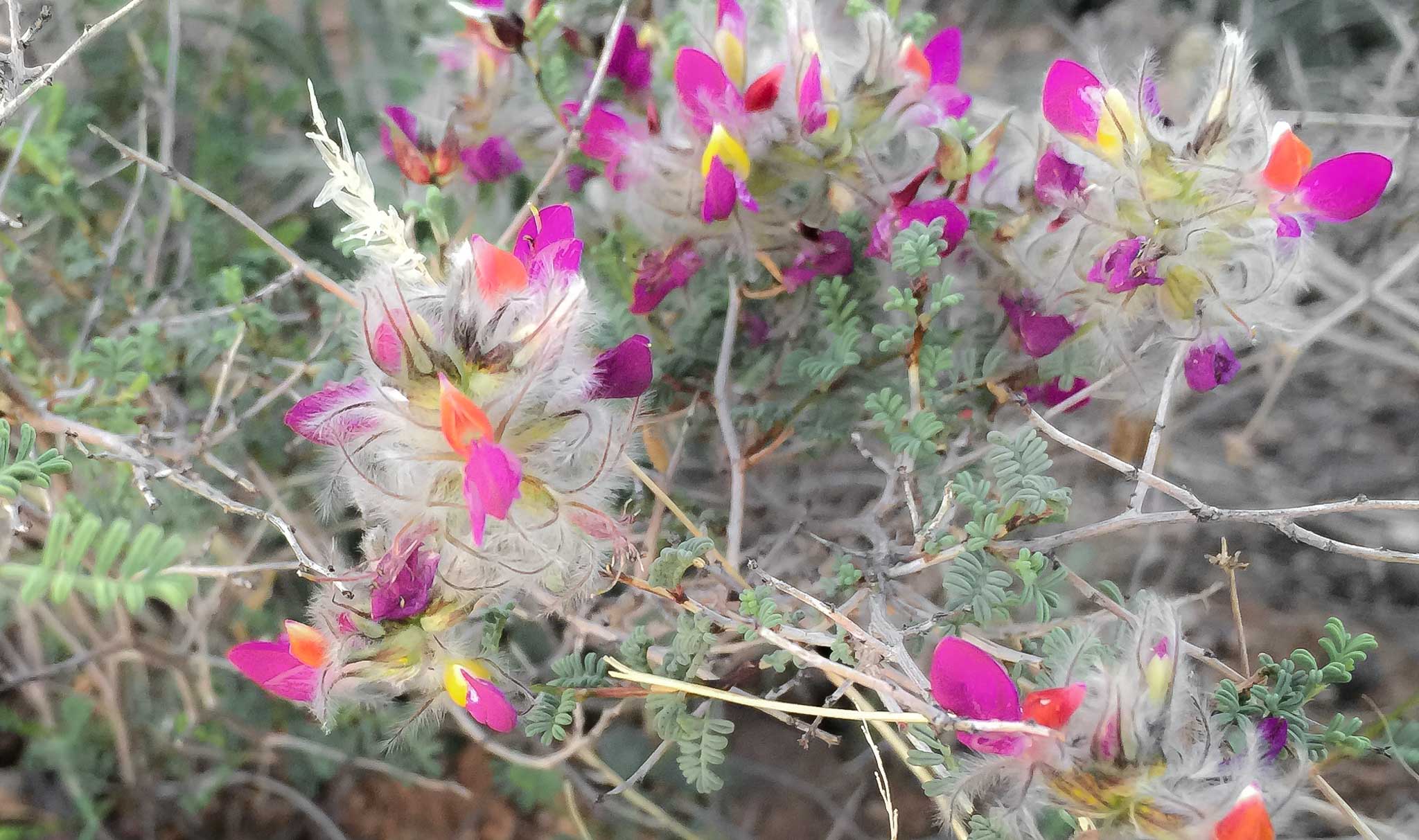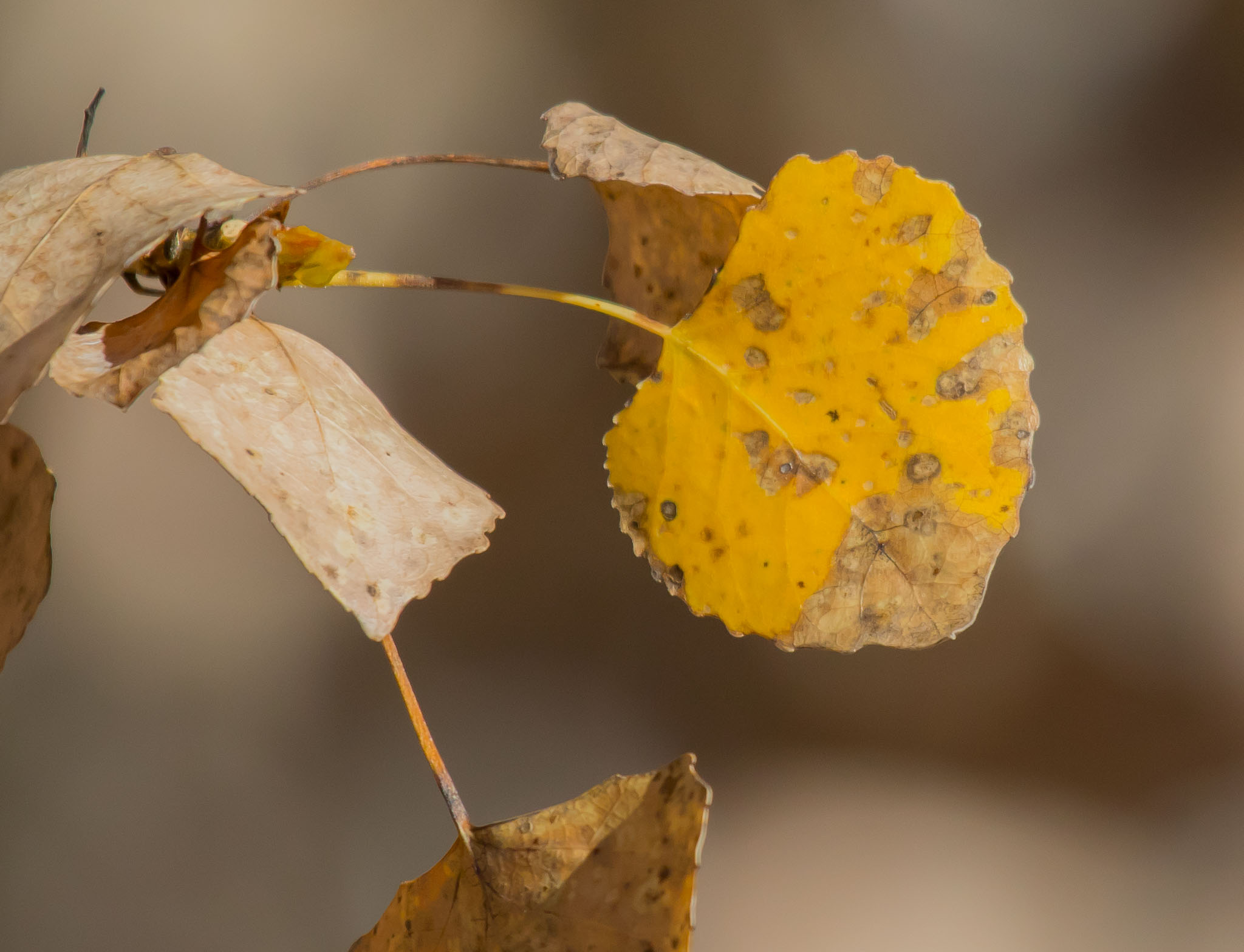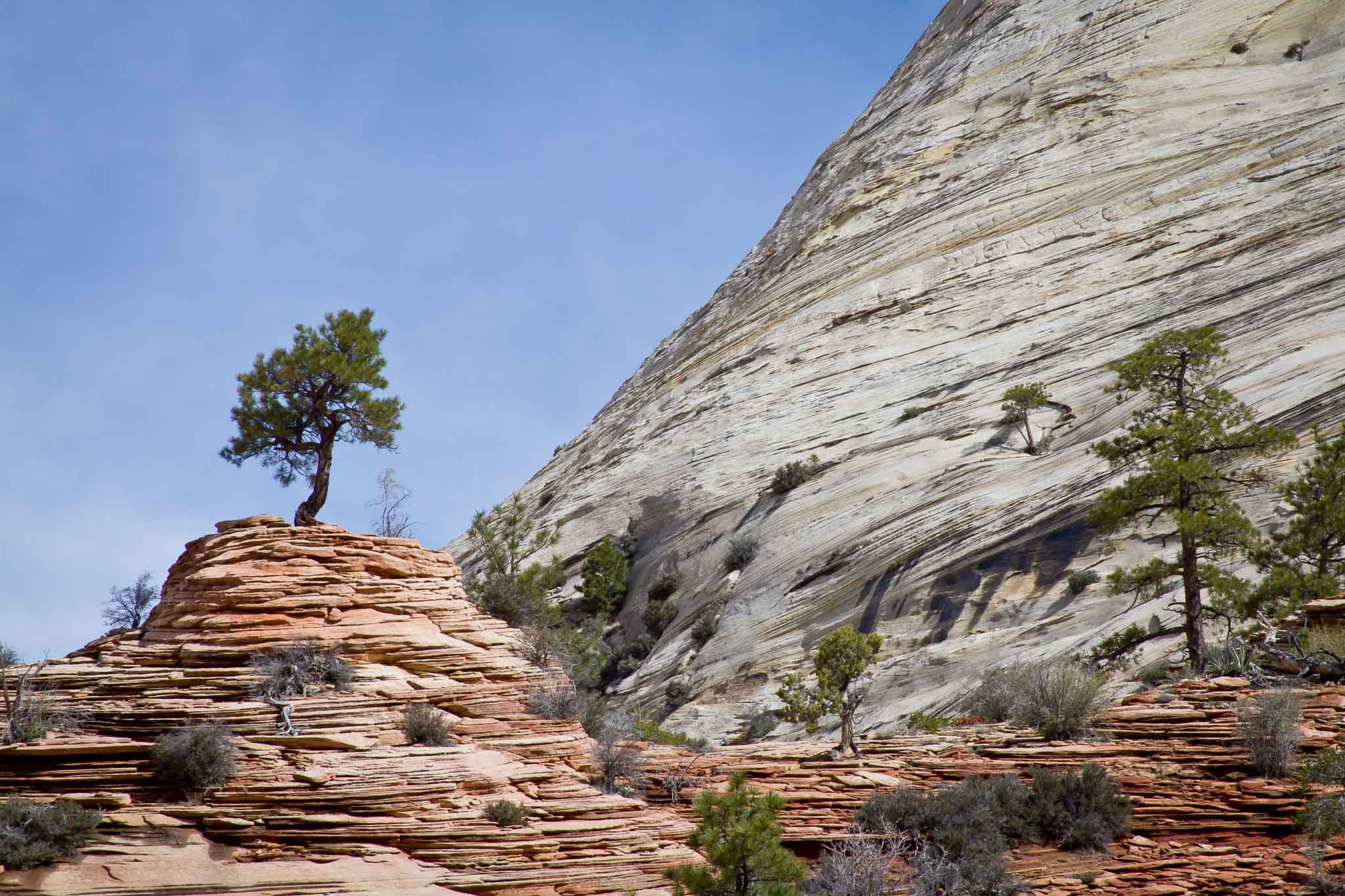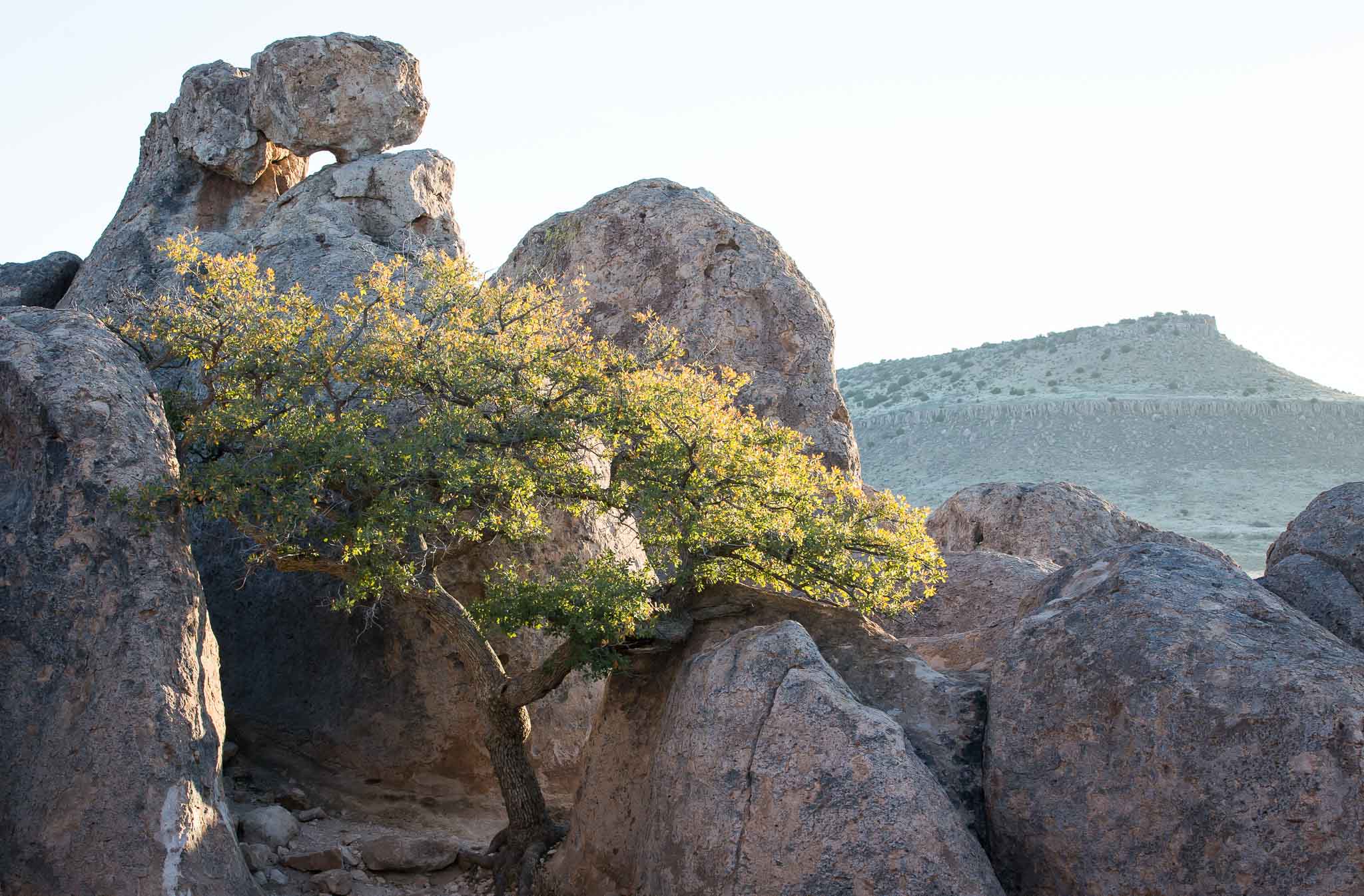Trees and Shrubs

Feather Dalea {more...}

Before the Fall {more...}

Lone Pine {more...}

Hangout {more...}

New Years Eve at the Bosque {more...}

Sun Kissed {more...}
Addenda to Photos
Feather Dalea
Pancho Villa State Park, Columbus NM
March 29, 2015
To my surprise a quick search didn't turn up this wildflower. These small flowers are on numerous small shrubs on Cootes Hill here at Pancho Villa State Park. To give a sense of scale, the purple petals are about 1/4 inch long and the roundish, fairly dense, shrubs are about a foot tall. I'll keep looking but if anyone knows what they are I'd appreciate a heads-up.
Evelyn knows her Dalea Formosa.
Thanks Evelyn!
Feather Dalea - Dalea Formosa
Common English Names: Feather Dalea, Feather Plume, Pea Bush, Plume Dalea
Common Spanish Names: Yerba De Alonso García
Scientific Name: Dalea formosa (DAY-lee-uh for-MOW-suh)
Family: Fabaceae-Papilionoideae (Pea Family)
Geographic Range: Central, Panhandle, and western Texas; Oklahoma Panhandle; southern Colorado; southern Utah; through New Mexico, Arizona, Sonora, Chihuahua, and Coahuila, Mexico.
Plant Form: Semi-evergreen shrub, 3 x 3'.
Remarks: Low mounding shrub with divergent branching woody stems, tiny light green compound leaflets and small, bright violet flowers with yellow throats in 1" clusters. From March to September, small pea-like flowers display prominently plumose calyces and produce seeds that also have plumed tails that give a distinctive fuzzy/feathery appearance intermittently from March through September.
From: Chihuahuan Desert Plants, The University of Texas at El Paso:
Before the Fall
Cottonwood Leaf, Bosque del Apache National Wildlife Refuge, San Antonio NM
November 10, 2014
Rio Grande Cottonwood
Populus deltoides, the eastern cottonwood or necklace poplar, is a cottonwood poplar native to North America, growing throughout the eastern, central, and southwestern United States, the southernmost part of eastern Canada, and northeastern Mexico. It is a eudicot.
The species is divided into three subspecies or up to five varieties. The subspecies classification is as follows:
Populus deltoides subsp. deltoides, eastern cottonwood is found in southeastern Canada (the south of Ontario and Quebec) and the eastern United States (throughout, west to North Dakota to Texas).
P. d. monilifera (Aiton) Eckenw., the plains cottonwood (syn. P. deltoides var. occidentalis Rydb.; P. sargentii Dode) ranges from southcentral Canada (southern Alberta, Saskatchewan, and Manitoba) to the central United States and south to northern New Mexico and Texas.
P. d. wislizeni (S.Watson) Eckenw., the Rio Grande cottonwood (syn. P. wislizeni (S.Watson) Sarg.; P. fremontii var. wislizeni S.Watson) grows from southern Colorado south through Texas to northeastern Mexico (Chihuahua, San Luis Potosi), and west to Arizona (presence in California, listed by GRIN, is doubtful, not included in the Jepson Flora of California). (Note: Some sources mistakenly spell the epithet "wislizenii." Correct spelling is with one "i," per ICN article 60C.2.)
It needs bare soil and full sun for successful germination and establishment; in natural conditions, it usually grows near rivers, with mud banks left after floods providing ideal conditions for seedling germination; human soil cultivation has allowed it to increase its range away from such habitats.
Wikipedia
Lone Pine
Zion National Park, Springdale UT
April 11, 2011
Back in April 2011 I spent a few days at Zion National Park in Springdale UT. Climbing up out of the park, eastbound along route 9, I came upon these red and gray cliffs towering above me on the left and a pullout on the right. I pulled over, shot a few pictures, and went on my way. This one, yes, this is the one.
Hangout
Bosque del Apache National Wildlife Refuge, San Antonio NM
November 15, 2015
I've often seen Bald Eagles hanging out in this photogenic tree in the past but none this fall yet. I'm pleased the Refuge cut the brush along this section of the Farm Loop making this photo possible.
New Years Eve at the Bosque
Cottonwood at Sunset, Bosque del Apache National Wildlife Refuge, San Antonio NM
December 31, 2013
Happy New Year!
Sun Kissed
City of Rocks State Park, Faywood NM
March 17, 2016
Pareidolia
It's called pareidolia, a psychological phenomenon wherein the mind perceives a familiar pattern of something where none actually exists.
What do you see?
Emory Oak
Emory Oak, Quercus emoryi is an evergreen tree in the red oak group, retaining its leaves through the winter until the new leaves are produced in spring, and is a large shrub or small tree from 5–17 meters (17-57 feet) tall. The leaves are 3–6 cm (1.2-2.4 inches) long, entire or wavy-toothed, leathery, dark green above, paler below. The acorns are 1.5–2 cm (0.6-0.8 inch) long, blackish-brown, and mature in 6–8 months from pollination; the kernel is sweet, and is an important food for many mammals and birds.
Wikipedia
